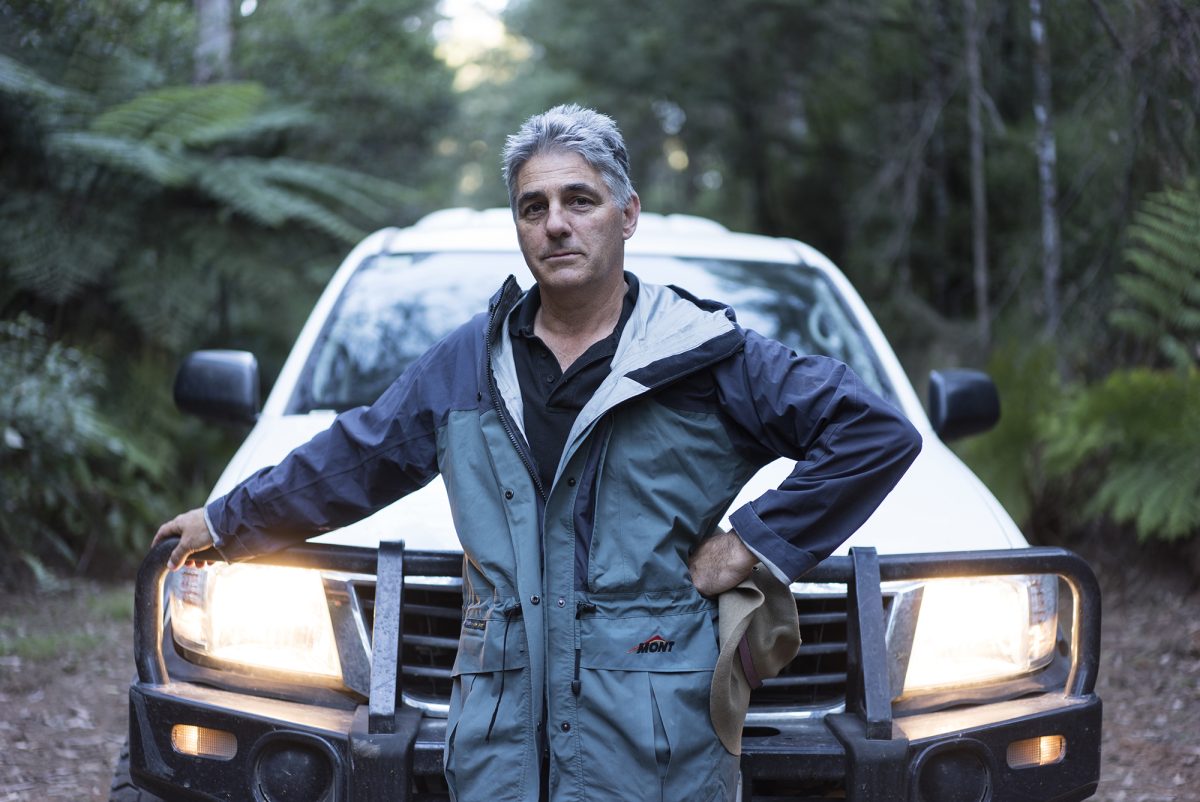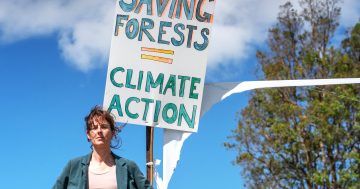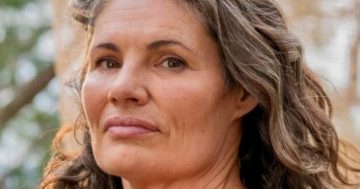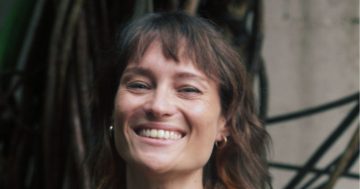
Professor David Lindenmayer’s book The Forest War lifts the lid on the destruction of native forests. Photo: J Walsh.
After 42 years of scientific research Professor David Lindenmayer can only find benefits in preserving native forests.
In his latest book The Forest Wars he outlines why the native forest logging industry is in terminal decline. He will speak about his myth-busting book at the Headland Writers Festival in Tathra on Saturday 19 October.
“The book paints a set of opportunities by moving out of native logging to focus on softwood and hardwood plantations and using our native forests for recreation and tourism,” Professor Lindenmayer said.
“There is also a really exciting opportunity because we have the most carbon dense native forests in the world. It means we can store vast amounts of carbon if left intact, plus intact forest always burns at lower severity than logged forests,” he said. “That was seen in the Black Summer bushfires.”
That is because logged forests become drier, warmer, and windier and the fire is more likely to spread to the crown.
His book is scathing about the native forest logging industry, including wood chipping.
The Environment Protection Agency (EPA) has 21 investigations underway into native forestry operations on Crown land and commenced prosecution in one instance. It lists 25 cases of disciplinary actions between January 2020 and July 2024.
“Economic analysis shows NSW would be significantly better off without the industry,” Professor Lindenmayer said. “It costs more to cut the forest down than you can make selling the timber and wood chips. The level of subsidies to this industry is gob-smacking.”

As recently as 2018, most of the timber from Corunna State Forest was going to Nowra, Narooma or Eden sawmills. Photo: Sean Burke.
The environmental cost is even higher.
“The carbon released when you chop down forest stays in the atmosphere for 100 to 1000 years,” Professor Lindenmayer said.
He cited the work of David Keeling at Hawaii’s Mauna Lao Observatory who began measuring the air’s composition in the 1950s. In 1981 there was 345 parts per million of carbon dioxide in the atmosphere. Now it is 425 parts. “Once we get to 500 parts per million, we are on track to four to five degrees warming,” he said.
Professor Lindenmayer also drew attention to how the disturbance associated with wood chipping has caused the very flammable silver-top ash to dominate on NSW’s south coast.

Professor David Lindenmayer. Photo: ANU Media.
“It bounces back very quickly with seeds, and resprouts prolifically, so it is more fire-proof. It is good for wood chipping but has many nasty toxins in its leaves. Silver-top ash is inedible for koalas and greater gliders, and no good for biodiversity,” he said.
He said most sawn timber in NSW already came from plantations while the vast majority of native timber went into wood chipping. That is partly because there are 820 species of eucalyptus with different properties and densities, for example, while plantation timber is very consistent, can be treated to give strength and stability, and doesn’t buckle.
Professor Lindenmayer said if the NSW’s Forestry Industry Action Plan “can help the industry to transition more quickly and focus on softwood plantations, it is a smart thing to do, otherwise it is flogging a dead horse”.
He claimed the concept of fossil fuel companies like Woodside Energy buying farmland to plant trees for carbon offset was a scam.
“When you pump fossil fuels into the atmosphere, it takes between 100 and 1000 years for the trees to grab the carbon and store it. Planting 12 young trees doesn’t make up for one huge tree,” he said. “If we are serious about getting to carbon neutral – and it should be carbon negative – we have to get off fossil fuels very quickly so having an offset isn’t real.”
Professor Lindenmayer’s book discusses opportunities for recreation and tourism in native forests, and how they are invaluable for carbon capture and storage, biodiversity, producing water and reducing fire risk.
“By not wasting all that money on an industry in terminal decline, we could invest in hospitals and doctors and nurses, and there would be more job opportunities, including more First Nations people working on the land,” he said.
One of his research projects involves the travelling stock reserves, many of which are along ancient songlines that were movement corridors. “They are often the most intact vegetation in our landscape.” He is working in partnership with the Ngunnawal, Onerwal and Wiradjuri people on cultural burns to see if they can bring back some of the rare plants.
Fortunately, Professor Lindenmayer believes most of the damage that has been done is retraceable over time. That is reassuring coming from one of the world’s most productive and most highly cited scientists, particularly in forest ecology and conservation biology.
Get tickets to his not-to-be-missed talk here. People unable to travel to Tathra can livestream all the sessions, including Professor Lindenmayer’s, held in the Tathra Hall, for $40. Several sessions will also be aired free at libraries in the Eurobodalla and Jindabyne areas.













